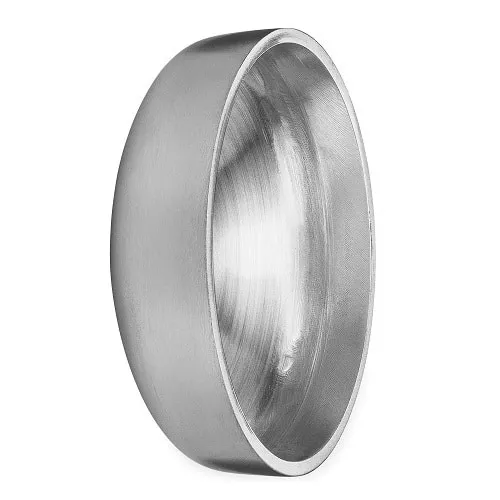-
Cangzhou Yulong Steel Co., Ltd.
-
Phone:
+86 13303177267 -
Email:
admin@ylsteelfittings.com
- English
- Arabic
- Italian
- Spanish
- Portuguese
- German
- kazakh
- Persian
- Greek
- French
- Russian
- Polish
- Thai
- Indonesian
- Vietnamese
- Zulu
- Korean
- Uzbek
- Hindi
- Serbian
- Malay
- Ukrainian
- Gujarati
- Haitian Creole
- hausa
- hawaiian
- Hebrew
- Miao
- Hungarian
- Icelandic
- igbo
- irish
- Japanese
- Javanese
- Kannada
- Khmer
- Rwandese
- Afrikaans
- Albanian
- Amharic
- Armenian
- Azerbaijani
- Basque
- Belarusian
- Bengali
- Bosnian
- Bulgarian
- Catalan
- Cebuano
- China
- China (Taiwan)
- Corsican
- Croatian
- Czech
- Danish
- Esperanto
- Estonian
- Finnish
- Frisian
- Galician
- Georgian
- Kurdish
- Kyrgyz
- Lao
- Latin
- Latvian
- Lithuanian
- Luxembourgish
- Macedonian
- Malgashi
- Malayalam
- Maltese
- Maori
- Marathi
- Mongolian
- Myanmar
- Nepali
- Norwegian
- Norwegian
- Occitan
- Pashto
- Dutch
- Punjabi
- Romanian
- Samoan
- Scottish Gaelic
- Sesotho
- Shona
- Sindhi
- Sinhala
- Slovak
- Slovenian
- Somali
- Sundanese
- Swahili
- Swedish
- Tagalog
- Tajik
- Tamil
- Tatar
- Telugu
- Turkish
- Turkmen
- Urdu
- Uighur
- Welsh
- Bantu
- Yiddish
- Yoruba

Dec . 24, 2024 13:59 Back to list
reducing blind flange
Reducing Blind Flanges An Essential Component for Pipe Systems
In the realm of piping systems, flanges play a pivotal role in ensuring the integrity and efficiency of fluid transport. Among the various types of flanges, reducing blind flanges have emerged as a crucial component, combining functionality with cost-effectiveness. This article explores the importance, applications, and advantages of using reducing blind flanges in industrial settings.
What is a Reducing Blind Flange?
A reducing blind flange is a specialized type of flange that is used to seal the end of a pipe or fitting while also accommodating a reduction in pipe diameter. Unlike standard blind flanges that block off a pipe without alteration in dimensions, reducing blind flanges allow for the transition from a larger pipe size to a smaller one. This unique design is particularly useful in situations where space is constrained, or where it's necessary to reduce the flow size without the need for additional fittings or components.
Key Features
1. Material Versatility Reducing blind flanges are available in a variety of materials, such as stainless steel, carbon steel, and plastic. This variety allows engineers to select the best material based on the application’s temperature, pressure, and corrosion resistance requirements.
2. Size Options These flanges come in numerous sizes to accommodate different pipe diameters, making them adaptable for diverse piping systems.
3. Pressure Ratings Reducing blind flanges are designed to handle different pressure ratings, ensuring they can be used in high-pressure applications without risk of failure.
4. Customizable Designs In many cases, manufacturers can produce custom designs of reducing blind flanges to meet specific project requirements, enhancing their versatility in different industries.
Applications
Reducing blind flanges are utilized across a wide range of industries, including
reducing blind flange

- Oil and Gas In the oil and gas industry, controlling the flow of liquids and gases is critical. Reducing blind flanges are used in pipelines for both pressure management and flow adjustment.
- Water Treatment In water treatment facilities, these flanges are essential for managing pipe sizes throughout the filtration and distribution processes.
- Chemical Processing The chemical industry employs reducing blind flanges for their ability to handle various chemicals at different pressures and temperatures.
- HVAC Systems In heating, ventilation, and air conditioning systems, reducing blind flanges can be used to minimize space while maintaining system efficiency.
Advantages of Reducing Blind Flanges
1. Space Savings One of the most significant benefits of reducing blind flanges is their ability to save space. Traditional methods of transitioning between different pipe sizes often require additional fittings and joints. By combining a blind flange and a reducing feature, these flanges facilitate a more compact design.
2. Cost Efficiency Utilizing reducing blind flanges can cut costs related to materials and labor. Fewer fittings mean less material and a reduction in installation time, leading to lower overall project costs.
3. Simplified Maintenance With fewer components in the pipeline system, maintenance becomes simpler. Reducing blind flanges contribute to a more streamlined system that is easier to inspect and repair.
4. Increased Reliability Fewer joints and connections typically equate to a lower risk of leaks and failures. This reliability is crucial in high-stakes environments like chemical plants and oil refineries.
Conclusion
In summary, reducing blind flanges are an indispensable part of modern piping systems. Their ability to provide a secure seal while transitioning between sizes simplifies installation, reduces costs, and minimizes potential leak points. As industries continue to evolve, the demand for innovative and efficient components like reducing blind flanges is only set to grow, making them a topic of interest for engineers and industry professionals alike. By understanding and effectively utilizing reducing blind flanges, companies can enhance the performance and reliability of their piping systems, ensuring they meet the demands of today’s challenging industrial environments.
Latest news
-
ANSI 150P SS304 SO FLANGE
NewsFeb.14,2025
-
ASTM A333GR6 STEEL PIPE
NewsJan.20,2025
-
ANSI B16.5 WELDING NECK FLANGE
NewsJan.15,2026
-
ANSI B16.5 SLIP-ON FLANGE
NewsApr.19,2024
-
SABS 1123 FLANGE
NewsJan.15,2025
-
DIN86044 PLATE FLANGE
NewsApr.19,2024
-
DIN2527 BLIND FLANGE
NewsApr.12,2024
-
JIS B2311 Butt-Welding Fittings LR/SR 45°/90° /180°Seamless/Weld
NewsApr.23,2024











